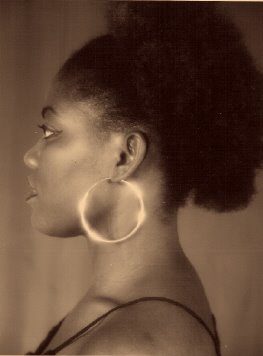
Entrances and exits: A personal journey
In December of 2010, I left Lagos for a week to go back to my village, the scenes of my childhood and my ‘primary colours’, with the sole purpose of discovering what has influenced my art over the years. Some things I could pull from memory, but there were many I had forgotten or never really experienced. With a keen eye and a camera, I set to work; and what I discovered about my heritage and ancestral home was shocking to me. Until then, I did not realise that, over the decades of my art practice, I have unconsciously been feeding off of what was always there as part of my everyday life when I was growing up, which I never paid much attention to. The numerous shrine walls in neighbouring villages, the painted mud walls of my grandmothers, my uncles’ decorated rooms and other villagers’ walls were all beaming with different kinds of art. I photographed as many as possible, because it was obvious that many people no longer care about these ‘primitive and pagan’ arts.
With some of the walls and art already gone, and a very few left, I set to work on what remained. Some of the bold use of earth tone colours on walls reminded me of Mark Rothko’s large canvases. The valour with which colours, patterns and designs were engraved or drawn on walls, doors and other surfaces, fueled my drawings with chalks on the bare, dilapidated walls. Because I considered the chalk on wall drawings temporary, I decided to photograph them for posterity; and perhaps in so doing, I could show the world things that may not ordinarily be seen in their natural state.

I thought I would stop at the drawings on walls and doorways. However, I found myself thinking about the history behind the walls and the doors I drew on in the village, and so I decided to extend the experience to my studio in Lagos. People that have come and gone in my life over time through the passageways kept playing in my memory. My grandmothers, my father and many of my uncles that have left, came alive again. The doors I rejuvenated through art, were the same ones they traversed while alive. I began to look at the duality of the doorway, a passageway for entry and exit, life and death, night and day. Life itself is full of doors, whether real or imagined. I am yet to see any human that hasn’t gone through a door. Whatever we do when we enter or exit from any door in life is what shapes our lives as human on earth.
It is also pertinent to say that the works in Entrances and Exits go beyond physical doors; they signify transitions in life. In between the comings and goings, memories are built constantly. Memories of how we move from one phase of life to another, from childhood to adulthood, boy to man, girl to woman, life to death etc. The events that orchestrate these transitions are mystical, not physical and sometimes invisible, yet they manifest as some kind of doors.
All materials used in producing these paintings and drawings are physically cut in the shape of doors, in order to reveal another side of the same work. This is symbolic of the openings and closings that are associated with doors. Birth and death have doorways, be it a woman’s birth canal or the gaping grave on the earth.
Victor Ehikhamenor
Lagos, May 2011
It's been 2 years since Ehikhamenor's first exhibition on return to Nigeria. Here below is a video of my interview with him on Mirrors & Mirages which opened at Terra Kulture in Lagos on May 24, 2009.
- Entrances & Exits: In Search of Not Forgetting is at the Centre for Contemporary Art, Sabo, Yaba, Lagos from Saturday May 7 to May 28.
















.jpg)
.jpg)


.jpg)
.jpg)
.jpg)



.jpg)

.jpg)


























.jpg)




